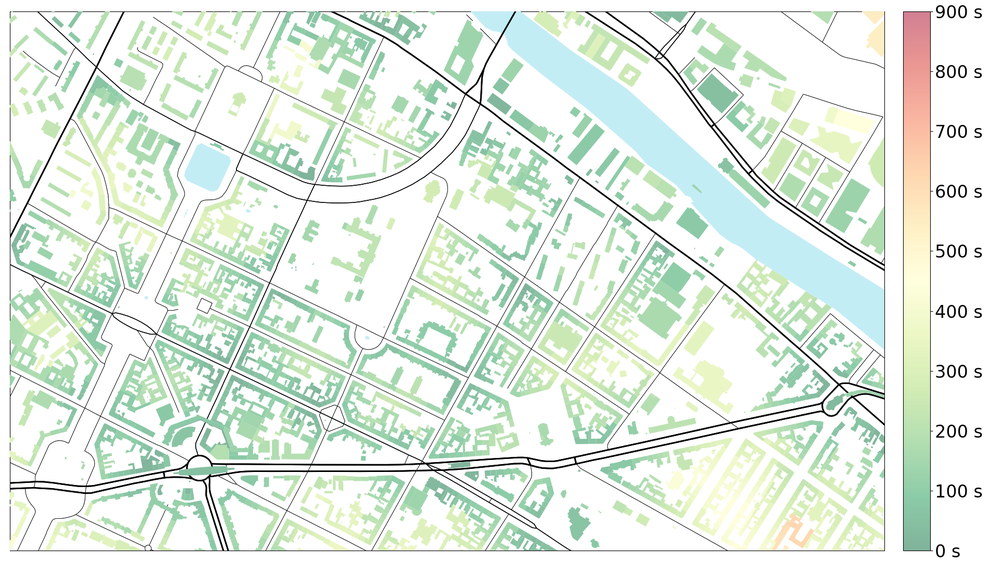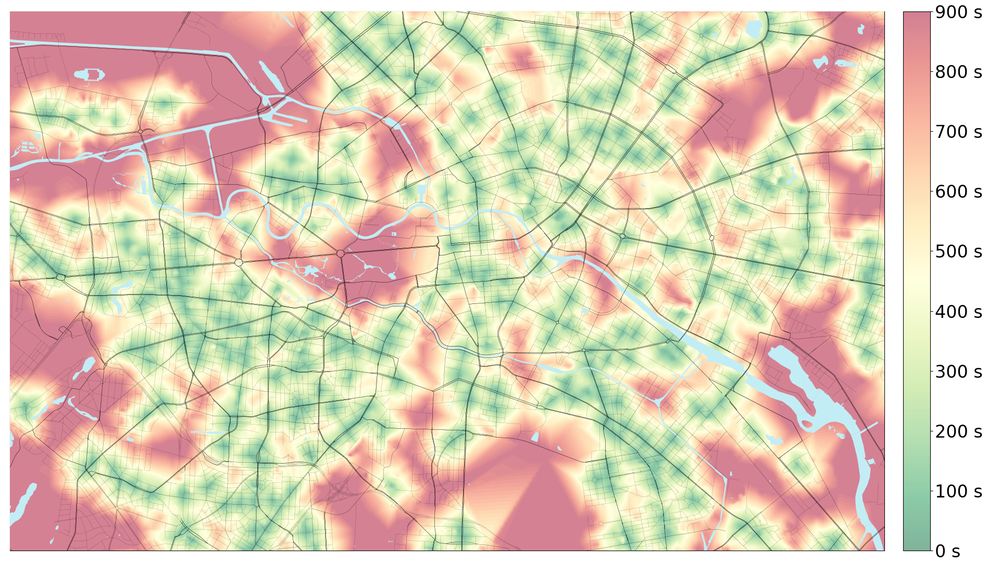UrMoAC
How it works
Accessibility measures are calculated via a so‑called breadth‑first search on a graph representing the transport network. The usability of individual routes (permissibility of travel) for the modelled transport modes – walking, cycling, MIV and public transport – is taken into account. Using the scripts integrated in UrMoAC, transport networks as well as various types of origins, such as residential buildings, or destinations, such as schools, can be extracted from OSM data. GTFS files (the file format for timetables) can also be imported to model public transport.

The special feature of UrMoAC is its flexibility. Input data can be read from databases or files, and results can be saved in a variety of formats. The results may be aggregated and weighted according to specific criteria. For example, the accessibility measure can be weighted by the number of people living at the origin, to emphasise the influence of multi‑family dwellings over single‑family houses. Conversely, destinations can also be weighted; an example would be the use of workplaces at the destination locations.
When determining reachable destinations, various constraints can be formulated: only the nearest destination, a given number of destinations, a given travel distance or time, or a target value of the weighting variable. Thus, the average travel time to the three nearest pharmacies can be derived, or alternatively the number of pharmacies reachable within half an hour can be output.


UrMoAC also includes tools for preparing input data and visualising the results. The programme is written in the Java programming language and can therefore be run on virtually any system.
Use, download and installation
UrMoAC is available as open‑source software under the Eclipse Licence 2.0 at https://github.com/DLR-VF/UrMoAC. The DOI is 10.5281/zenodo.13234444.



